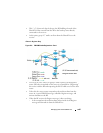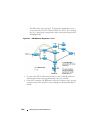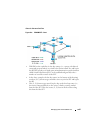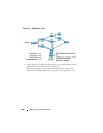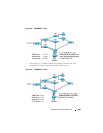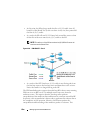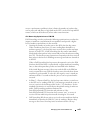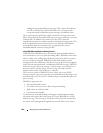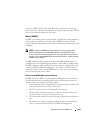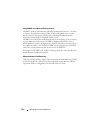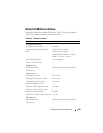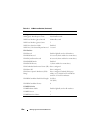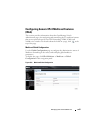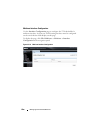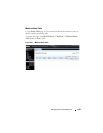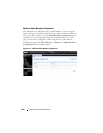
Managing IPv4 and IPv6 Multicast 1353
router on its RPF interface, the State Refresh message causes an existing
prune state to be refreshed. State Refresh messages are generated periodically
by the router directly attached to the source.
What Is DVMRP?
DVMRP is an interior gateway protocol that is suitable for routing multicast
traffic within an autonomous system (AS). DVMRP should not be used
between different autonomous systems due to limitations with hop count and
scalability.
DVMRP exchanges probe packets with all its DVMRP-enabled routers, it
establishes two-way neighboring relationships, and it builds a neighbor table.
DVMRP exchanges report packets and creates a unicast topology table, with
which it builds the multicast routing table. This table is used to route the
multicast packets. Since every DVMRP router uses the same unicast routing
protocol, routing loops are avoided.
Understanding DVMRP Multicast Packet Routing
DVMRP is based on RIP; it forwards multicast datagrams to other routers in
the AS and constructs a forwarding table based on information it learns in
response. More specifically, it uses this sequence.
• A new multicast packet is forwarded to the entire multicast network, with
respect to the time-to-live (TTL) of the packet.
• The TTL restricts the area to be flooded by the message.
• All routers that do not have members on directly-attached subnetworks
send back
Prune messages
to the upstream router.
• The branches that transmit a prune message are deleted from the delivery
tree.
• The delivery tree which is spanning to all the members in the multicast
group, is constructed in the form of a DVMRP forwarding table.
NOTE: In addition to DVMRP, the switch supports the Protocol-Independent
Multicast (PIM) sparse-mode (PIM-SM) and dense-mode (PIM-SM) routing
protocol. Only one multicast routing protocol can be operational on the switch at
any time. If you enable DVMRP, PIM must be disabled. Similarly, if PIM is enabled,
DVMRP must be disabled.



